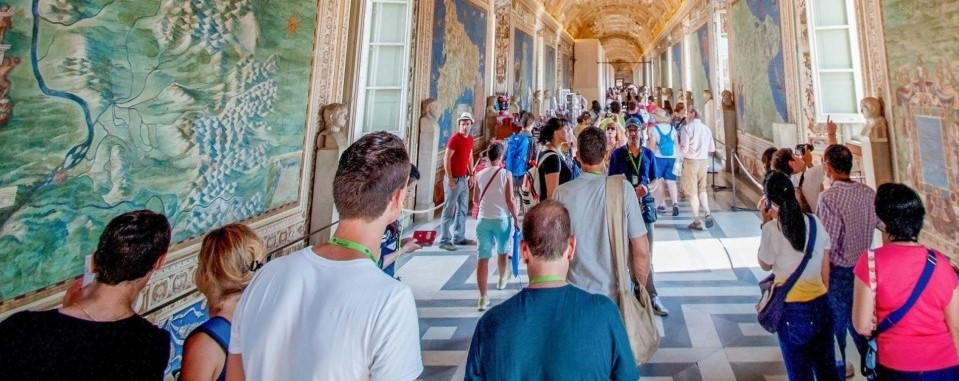The Vatican Museums offer audioguides to enhance visitors' experience while exploring the museum's extensive collection. Audioguides are offered in multiple languages and the rental fee is often included in the entrance ticket price. Consequently, an average of 4.000 audioguides per day are offered to the public.
The headsets included in the audioguides are disposable and thrown away after every tour. The microphones used by tour guides are reusable and pass from one guide to another at the end of each tour.
Main challenges:
- Convert to reusable headsets instead of disposable ones, to gain advantages in terms of environmental impact and potential cost savings
- Maintain proper hygiene for reusable audioguides to ensure the safety and well-being of visitors
- Maintain proper hygiene for reusable microphones to ensure the safety of guides
- Ensure the safety of the personnel who manage the equipment during the delivery and collection of the audio guides to the visitors and guides

Hand sanitizer stations have been placed near the area where visitors pick up or return audioguide devices and they are encouraged to clean their hands before and after using the equipment.
But the same audioguide devices should be regularly cleaned and sanitized. And the use of appropriate cleaning agents or innovative solutions that are safe for electronic devices is crucial to avoid damaging the equipment.
Museum administrators involved in the decision-making process, decided to use UV-C light sterilization chambers to disinfect audioguide devices, including headsets and microphones. Equipment is made of UV-resistant plastics and in general, the life cycle of such equipment specifically headsets and microphones is lower than possible negative effects of UV light on the same.
The Light Progress UV-BOX is tested by the Department of Molecular Medicine of the University of Siena, Italy, for efficacy up to 99% reduction of Bacillus, E. Coli, Clostridium, Legionella, Vibrio, Salmonella, Pseudomonas, Staphylococcus, etc. in just 3 minutes of operation.
Click HERE to find more about the UV-BOX.
Visit our Youtube channel to watch the product video: VIDEO - UV-BOX
Copywrite ©Light Progress Srl – All rights reserved




